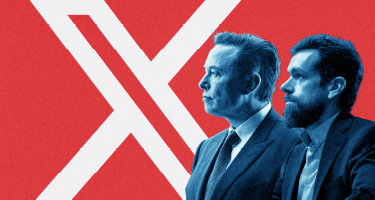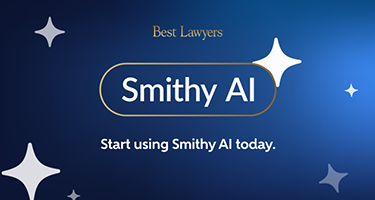California is a no-fault divorce state. That means a marriage can be legally ended based on irreconcilable differences, without either spouse having to prove fault. While this can streamline divorce in California, the rest of the process—property division, child custody, spousal support—can still be complex.
Who Can File for Divorce in California?
To file for divorce in California, one spouse must have lived in the state for at least six months and in the county of filing for at least three months. These residency requirements apply to most marriages.
Registered domestic partnerships follow a different rule: if the partnership was registered in California, either partner can file for divorce in the state regardless of current residency. This exception helps couples who’ve since relocated outside California but still need to dissolve their partnership under state law.
For military families or those frequently moving, these timelines may affect when and where a divorce can be filed.
California’s No-Fault Divorce System
California’s no-fault framework means the court does not consider misconduct—such as infidelity or abandonment—when deciding whether to grant a divorce. The standard ground is irreconcilable differences, a legal term indicating that the marriage has broken down beyond repair.
There’s no requirement to provide evidence of harm or wrongdoing. Even if only one spouse wants a divorce, the court will proceed. This legal structure can reduce litigation around blame, but it doesn’t simplify issues like custody or asset division.
Divorce Rules in California: Procedure and Timeline
The divorce process in California follows a consistent sequence, but the time to final judgment varies depending on the complexity of the case.
The main steps in a California divorce include:
- Filing a petition: One spouse (the petitioner) files the Petition for Dissolution of Marriage and pays the filing fee.
- Serving the other party: Legal papers must be served to the other spouse (the respondent), who then has 30 days to file a response.
- Financial disclosures: Both parties must complete and exchange preliminary disclosures, which detail assets, debts, income and expenses.
- Settlement or litigation: If spouses agree on all issues, they can submit a settlement agreement. If not, the case proceeds to mediation or trial.
- Judgment and final orders: Once the court reviews the agreement or makes final rulings, it issues a Judgment of Dissolution.
The minimum waiting period is six months from the date the respondent is served. No CA divorce can be finalized faster than that, regardless of agreement. In contested cases, especially those involving property disputes or custody, the process can stretch much longer—often 12 months or more.
Division of Property in California
California applies a community property standard. Any income, property, or debt acquired during the marriage is typically divided 50/50. This includes real estate, vehicles, jewelry, artwork, retirement accounts and even debts—regardless of whose name they’re in.
Separate property—such as assets owned before the marriage, gifts or inheritances—remains with the original owner, as long as it hasn’t been commingled. If, for example, a spouse uses inheritance money to buy a shared home, the court may treat part or all of the home as community property depending on how the funds were used and titled.
High-net-worth divorces often require forensic accounting to track complex financial assets, including stock options or business interests. Spouses should be prepared to present documentation and may need expert valuations.
Spousal Support (Alimony)
Spousal support in divorce California laws is not automatic. The court weighs several factors before awarding support, including:
- Length of the marriage
- Each spouse’s income and earning capacity
- Whether one spouse sacrificed career advancement to support the family
- Standard of living established during the marriage
Support may be temporary (while the divorce is pending) or long-term (post-divorce). In marriages over ten years, support duration may be indefinite, though not guaranteed. Judges aim to provide enough support for the lower-earning spouse to maintain stability while working toward financial independence.
Failure to request spousal support in a timely manner can result in losing the right to ask for it later. Support orders can be modified if circumstances significantly change, such as a job loss or disability.
Child Custody and Support
Child custody in California is divided into legal custody (decision-making authority) and physical custody (where the child lives). Courts favor joint legal custody when possible, meaning both parents have input on major decisions. Physical custody can be joint or sole, depending on the child’s best interest.
Factors that influence custody decisions include:
- The child’s age and health
- The emotional bond with each parent
- Each parent’s ability to provide a stable home
- Any history of domestic violence or substance abuse
Child support is determined using a statewide formula that considers each parent’s income, the amount of time the child spends with each parent and certain deductions like health insurance and daycare expenses. The resulting amount is presumed correct but can be adjusted in special cases.
Support orders are enforceable by law and handled by the California Department of Child Support Services (DCSS). Delinquent payments can lead to wage garnishment, license suspension or contempt proceedings.
Legal Separation vs. Divorce
There’s no requirement to live apart before filing for divorce in California. Legal separation is an alternative path—not a prerequisite.
In a legal separation, spouses remain legally married but divide assets, set custody arrangements and may receive spousal support. This option appeals to couples with religious objections to divorce or those who need to retain spousal benefits like health insurance.
Legal separation follows the same process as divorce, but it does not terminate the marriage. Either party can later amend the separation into a divorce, but they’ll still need to meet residency requirements.
Do You Need a Lawyer to Divorce in California?
While it’s legally possible to complete a divorce without a lawyer, doing so carries significant risks, especially when the divorce involves minor children, high-value assets or complex legal issues.
A qualified family law attorney ensures:
- Compliance with California divorce laws and court procedures
- Accurate and complete financial disclosures
- Enforceable settlement agreements
- Protection against unfavorable custody or support outcomes
DIY divorces often fail to account for tax consequences, long-term financial impacts or enforceability. Even if you and your spouse agree on terms, having an attorney review the agreement before filing can prevent future disputes.
Common Mistakes to Avoid
Divorcing in California without guidance can lead to long-term financial and legal setbacks. Common mistakes include:
- Failing to disclose assets: Leaving out bank accounts or retirement funds—intentionally or not—can result in sanctions or a reopened case.
- Missing deadlines: Failing to respond to filings or complete disclosures on time can lead to default judgments or monetary penalties.
- Agreeing too quickly: Accepting unfavorable terms just to get it over with can lock you into support payments or asset splits that hurt you later.
- Ignoring tax implications: Dividing property without tax planning can trigger unexpected capital gains or loss of deductions.
Quick Divorce in California
Couples who meet specific criteria can apply for a summary dissolution, California’s version of a fast-track divorce. To qualify, all of the following must apply:
- Meet the standard divorce residency requirement
- Marriage or domestic partnership lasted under five years
- No minor children together (biological or adopted) and neither spouse is pregnant
- No real estate ownership
- Joint debts under $6,000 (excluding car loans)
- Assets (excluding vehicles) worth less than $45,000 each
- Both spouses agree to waive spousal support
- Both agree on division of assets and sign a joint petition
This process skips court appearances and uses streamlined forms, but it’s only suitable for short-term, low-asset marriages without minor children. If either spouse changes their mind, they can cancel the filing within six months, the mandatory waiting period in California before dissolution becomes final.
Finalizing the Divorce
A divorce becomes official only when the court enters a Judgment of Dissolution. This document includes all final orders related to property, custody, support and other matters.
Even after agreement, delays can occur if forms are incomplete or improperly filed. Once the judgment is signed and six months have passed since service of the petition, the marriage is legally dissolved. Spouses are then free to remarry or make other legal decisions as single individuals.
Talk to a California Divorce Lawyer
If you're considering divorce or already navigating the process, connect with a peer-reviewed California divorce lawyer through Best Lawyers®. Experienced counsel can help protect your rights, avoid missteps and guide you toward a fair outcome.































